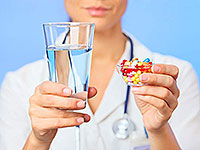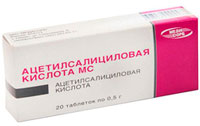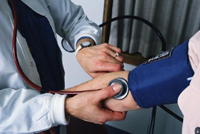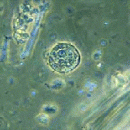The main symptoms of elevated temperature are associated with metabolic disorders, which leads to a violation of the operation of the central nervous system, cardiovascular and respiratory system. Treatment of subfebrile temperature symptomatic.
Content
Manifestations of subfebrile temperature
With a subfebrile temperature there is a change in metabolism (protein decay increases), sometimes there is a violation of the activity of the central nervous system, cardiovascular and respiratory systems, gastrointestinal tract. At the height of the subfebrile temperature, the confusion of consciousness, nonsense, hallucinations, in the future loss of consciousness are sometimes observed. These phenomena are not directly related to the nervous mechanism for the development of fever, they reflect the features of intoxication and the mechanism of development of the disease.
Increased body temperature during fever is accompanied by pulse. This does not happen for all feverish diseases. So, in the abdominal title, bradycardia is celebrated. The effect of increasing body temperature on the heart rhythm at the same time weakened by other disease factors. The increase in the pulse, directly proportional to the growth of body temperature, is noted with fevers caused by low-toxic pyrogen substances.
Breathing with increasing body temperature is expensive. The degree of gaining respiration is subject to significant fluctuations and is not always proportional to the growth of body temperature. Starting breathing mostly combines with a decrease in its depth.
For fever, the function of digestive organs is disturbed (decrease in digestion and absorption of food). The patients have a language, there is dryness in the mouth, the appetite is sharply reduced. Secretor activity of submandibular glands, stomach and pancreas weakened. Motor activity of the gastrointestinal tract is characterized violated. The formation of bile slightly decreases, its concentration increases.
The activities of the kidneys during the fever noticeably not visible. Increased diuresis (the amount of urine released) at the beginning of the fever is due to the redistribution of blood, an increase in its number in the kidneys. Water delay in the tissues at the height of the fever is often accompanied by a drop of diurere and an increase in urine concentration.
Violation of metabolism more depends on the development of the main disease than from increasing body temperature. Immunition of immunity, mobilization of various immunity links contribute to an increase in the protective functions of the body against infection and inflammatory process.
Treatment of elevated temperature
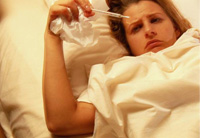 Subfebrile temperature creates less favorable conditions for multiplication of many pathogenic viruses and bacteria in the body. In this regard, the main treatment should be aimed at eliminating the disease that caused fever. The question of the use of antipyretic drugs is solved by a doctor in each particular case, depending on the nature of the disease, the age of the patient, its general condition and individual characteristics.
Subfebrile temperature creates less favorable conditions for multiplication of many pathogenic viruses and bacteria in the body. In this regard, the main treatment should be aimed at eliminating the disease that caused fever. The question of the use of antipyretic drugs is solved by a doctor in each particular case, depending on the nature of the disease, the age of the patient, its general condition and individual characteristics.
In case of non-infectious fever, symptomatic therapy is carried out in the same cases as in infectious fever, and in addition, with poor tolerability of patients with increasing body temperature. However, in the latter case, the doctor must compare the expected effectiveness of treatment with the possible adverse effects of drug use, especially if it is long. It should be borne in mind that the antipyretic agents from the group of non-nucleic analgesics in non-infectious feverism are practically not effective.
Increased body temperature to subfebrile values in patients with thyrotoxicosis (as against the background of infectious disease, and without it), it can be one of the symptoms of a developing thyrotoxic crisis, in which the patient needs to be equally hospitalized by providing emergency assistance.



